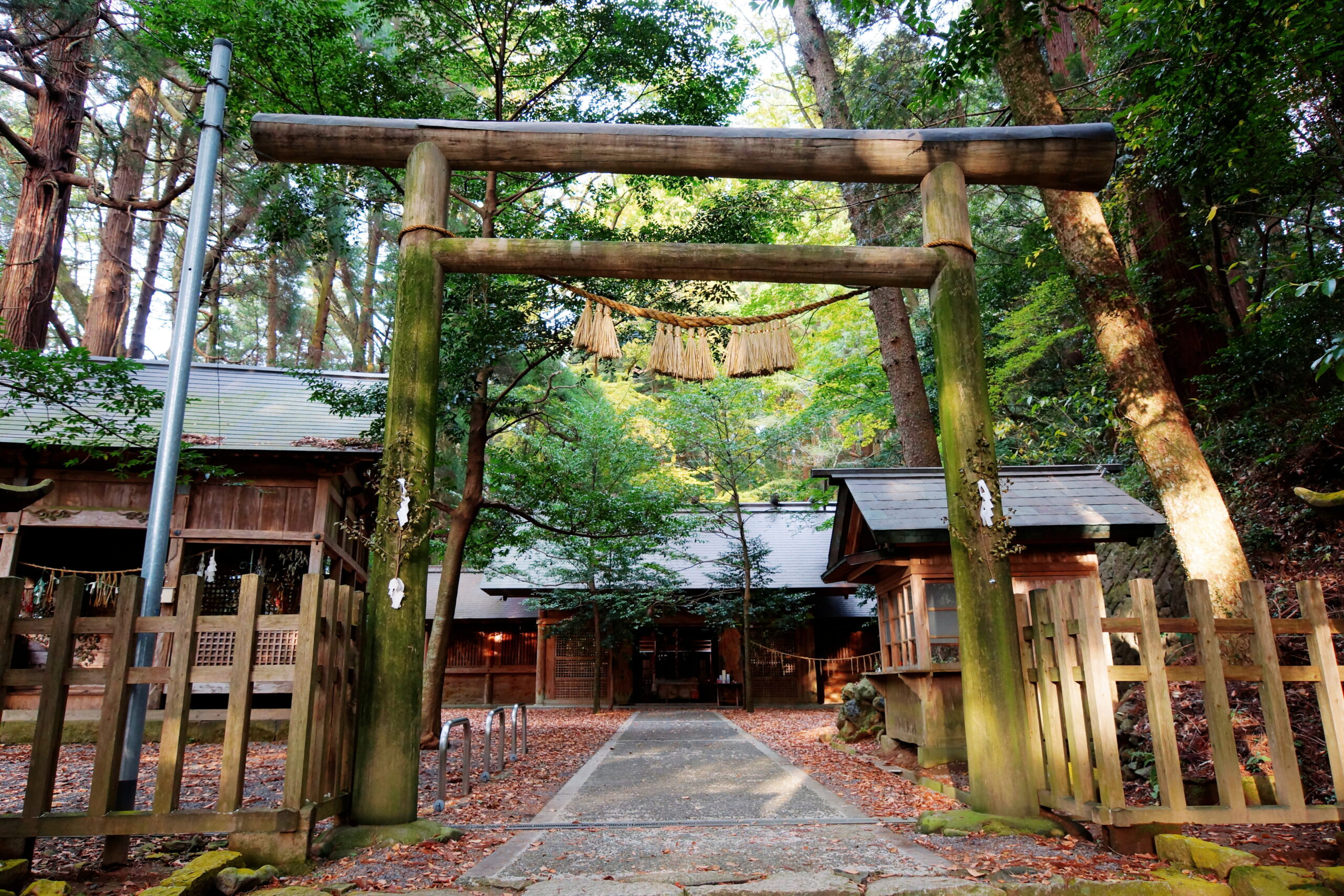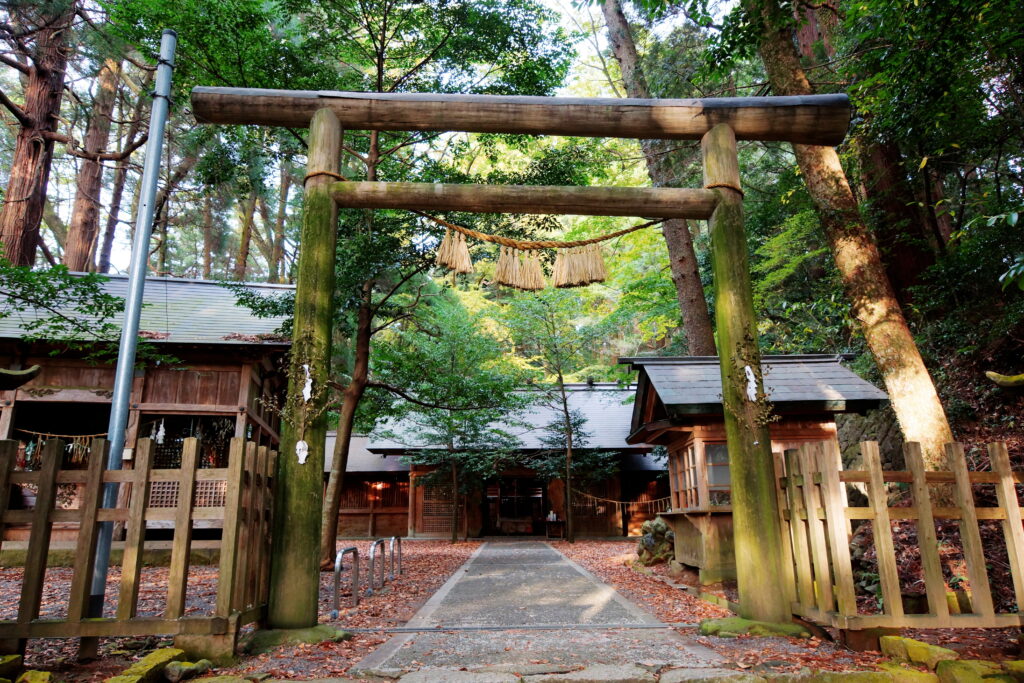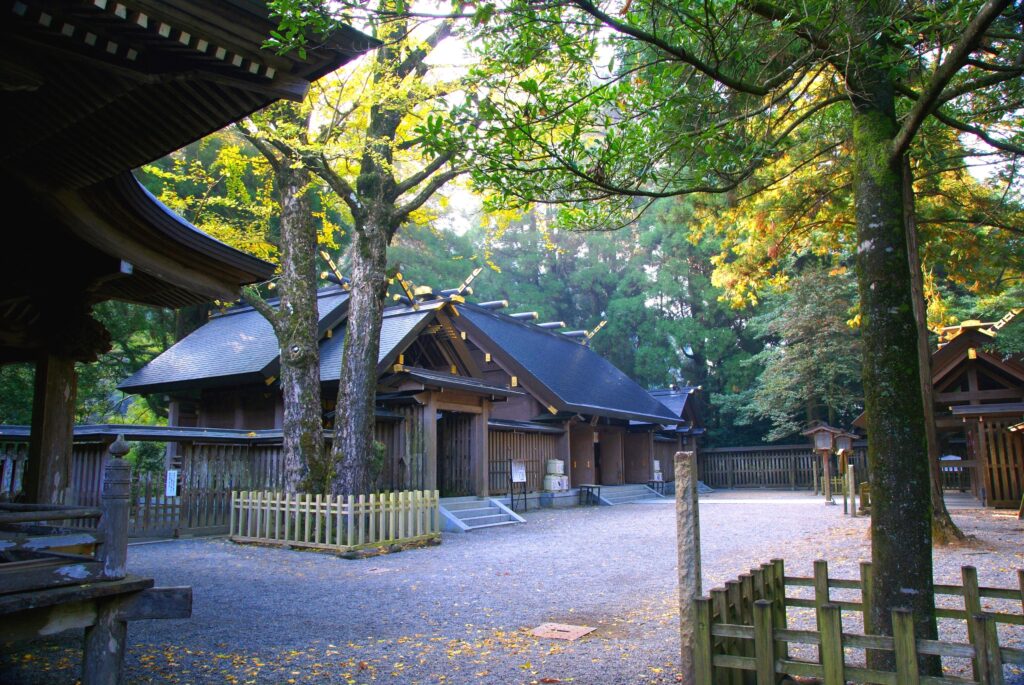East Sanctuary and West Sanctuary, Amano Iwato Shrine

East Sanctuary (Higashi Hongu)
The East Sanctuary become a part of Amano Iwato Shrine in 1970. Before this, it was know as Ujigami Shrine. Amaterasu Omikami is venerated here, as this the first place she was believed to have resided after re-emerging from Amano Iwato cave. It is uncertain how long a shrine has been present on this site, but it is said that an existing shrine was rebuilt here in 812 by the military commander Oga Koremoto (dates unknown), who had a dream that so frightened him he dedicated himself to the worship of Amaterasu. The shrine was rebuilt again in 1707, because the structure had burned down while the nation was gripped by civil war over a century earlier.
A rotating statue of Ame no Uzume no Mikoto, the kami deity whose dancing helped lure Amaterasu out of hiding, is near the foot of the path that ascends to the Main Sanctuary.

Far Precinct and West sanctuary (Nishi Hongu)
While the East Sanctuary honors Amaterasu Omikami as she is known after she re-emerges from the sacred cave, the West Sanctuary honors her as she was in her childhood. During this time, Amaterasu was known as Ohirume no Mikoto. The Sanctuary venerates her through an embodiment: the believed location of Amano Iwato, the cave where Amaterasu once hid herself and her light from the world. Amano Iwato is considered sacred, so it cannot be approached directly, but during guided tours it can be viewed from the Far Precinct, which directly faces it across the river.
Before entering the Far Precinct, one might notice a large magnolia tree called the ogatamanoki. This tree was designated a natural monument in 1969. It is said that the deity Ame no Uzume held branches from this tree as she danced in front of Amaterasu’s cave. The bells used in the theatrical Shinto dance kagura are thought to derive from the shape of the red fruit that blossoms from ogatamanoki in the autumn.
Near the parking lot of the West Sanctuary is a statue of Tajikarao no Mikoto, a kami deity of great strength. According to Japanese mythology, he helped bring light back to the world by throwing open the door to Amaterasu’s cave when she peeked out. This statue depicts his great feat, which is often demonstrated in kagura performance.

